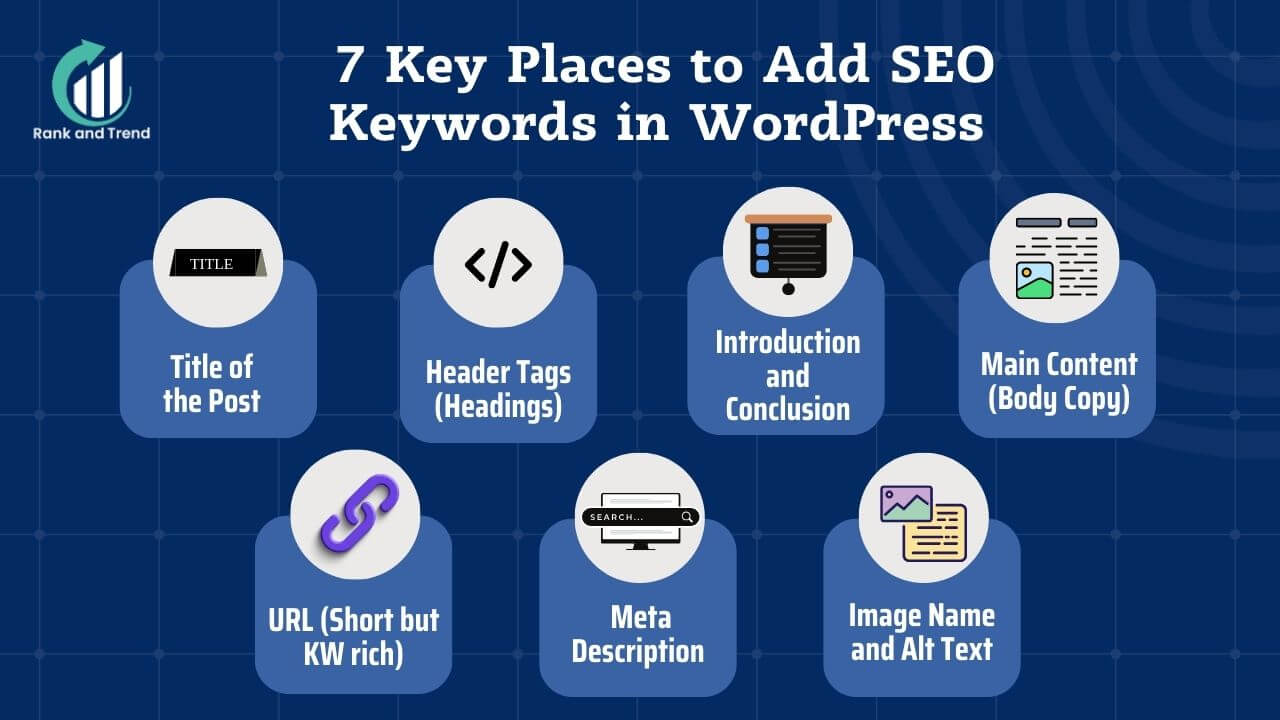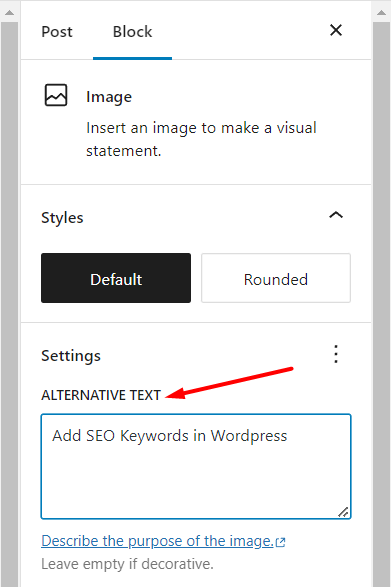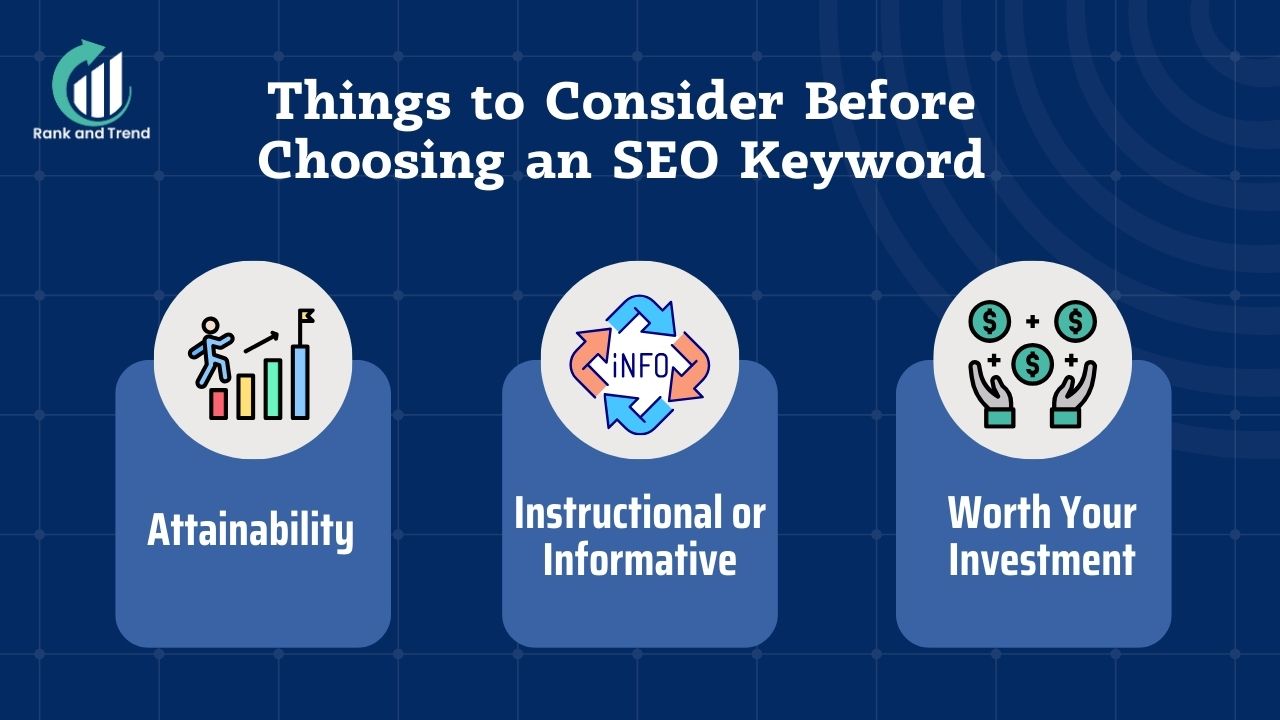Ever wondered why some posts get more love on search engines while others don’t?
It’s all about keywords! Adding the right meta description and SEO keywords is like putting up a big ‘Welcome’ sign for your WordPress website. Intriguing, isn’t it? Got your eyes set on Google’s front page? Want to know how to add SEO keywords in WordPress and where it’ll draw in the target audience?
Then, you’re in here for a treat. After this comprehensive guide, you’ll be able to SEO-optimize your WordPress site by adding keywords and meta descriptions.
Ready to give your organic search traffic and CTR a boost you’ve always dreamed about? Let’s dive in and make your site shine!
Why Bother About Adding SEO Keywords?
Imagine you’re on a quest for website wisdom. You type “How to create a site?” and then, with a tiny tweak, “How to fix a site?”
That simple, one-word tweak is keyword optimization, and it changes everything in SEO. The first focuses on creating a website, while the second offers insights into refining a website. Now, why the keyword fuss? Well, it’s like a secret handshake with search engines. Adding the right ones to your WordPress site ensures it’s a VIP in the search results club.
See, search engines use keywords to figure out what your site is about and decide where it should rank. Sure, keywords aren’t the sole ticket to Google ranking in the SERPs, but learning how to properly utilize them in your WordPress content is a game-changer.
Let’s make sure your website is the top result when your audience hits that search button!
7 Key Places to Add SEO Keywords in WordPress

After completing your keyword research and identifying the perfect ones for each post, it’s crucial to strategically incorporate them into your WordPress content.
Let’s explore some quick tips on where and how to place your SEO keywords –
1. Title of the Post
Let’s begin with the title – the first thing readers spot on search engine result page(SERPs). Your title should ideally have the keyword you want to rank for. Try placing it upfront, especially if your title is long. This ensures your keyword remains visible, even if the title gets cut off.
Keep it simple; shorter titles under 60 characters work best. Users are more likely to scroll past if it’s too long, complex, or irrelevant.
For instance, let’s check out the post below with “RankAndTrend” placed at the beginning of its title.

When it’s about the title, simplicity is the best key. Keep your title concise to avoid it being cut off on search results.
2. Header Tags (Headings)
The big titles(headlines) you see on a page are crucial. They’re not the same as the titles you find on SERPs, but they’re crafted for users already on a page. When search engines check a page, these titles are among the first things they check to figure out what the page talks about. These bold headings, also called header tags, do more than make your page look good. They’re like signposts organizing your content. Plus, they’re a great spot to add keywords. Search engines and readers check these headings to quickly understand the page.
So, tossing in your SEO keywords here can up your chances of showing up for relevant searches, significantly benefiting your organic SEO efforts.
Pro Tip: Just as with the body content, stuffing too many keywords into headings can have the opposite effect you want. So, don’t go overboard with keywords here; it might backfire.
3. Introduction and Conclusion
To get noticed, slip your SEO keyword into the intro of your article, especially in the first 150 words. This hooks your readers from the get-go and keeps them going. When they see the keyword early on, they know your content matches what they’re looking for. This gets them to stick around longer, telling search engines your content is top-notch.
4. Main Content (Body Copy)
Put your SEO keywords into your writing, but not too much. You might know that jamming your main word into your post or page too much isn’t cool.
It’s called “keyword stuffing,” and it’s not SEO’s good side – search engines don’t like it. Also, keyword stuffing decreases the user experience(UX) of your page. The trick is finding the right balance. Use your keyword enough so search engines know your stuff fits the search, but not so much that it’s annoying for the search engine or reader.
It’s sort of a judgment call, but you should aim for one keyword (which can be related to the main keyword) for every 200 words.
Pro Tip: Try mixing up your keyword a bit in your writing. We used phrases like “using keywords In WordPress,” “adding keywords to WordPress,” and “fine-tuning your WordPress website.”
5. URL (Short but KW rich)
On the SERP, the URL shows up right under the page title, so it’s key to slip in your keyword here too. In WordPress, slug is the part of the URL you can tweak and throw in the keyword.
To spruce up a URL’s slug, cut out unnecessary words like “a,” “the,” and “to,” and toss in hyphens between the rest. Your ideal slug should kinda look like the title of the page or post but not be an exact match. Slugs resembling post titles make users feel confident they’re hitting the right page. Too much difference, though, can mess with SEO rankings and hint that the content might not meet expectations. With slugs, the more predictable, the merrier. For a reliable and effective approach, consider enlisting professional expertise with our white hat SEO service.
6. Meta Description
Next is your meta description, a short blurb with your title and URL, giving extra details about your post or page.
Your meta description’s job is to persuade your reader that your post is worth clicking. Keep it under 160 characters, and toss in your target keyword.

Since your meta description is the default copy on social media when you share your post, make it catchy yet useful.
Pro Tip: Treat it like your page’s elevator pitch. It’s what social media users see, and if it doesn’t grab attention, it won’t get them to click. Be brief, clear, and straight to the point with your meta.
7. Image Name and Alt Text
When you use pictures (which is a good idea), put your keyword in the image name and alt text.
Alt text shows up only if the image can’t load, but it’s crucial for people using low-bandwidth devices, those with sight issues, and search engines. Keep alt text short (around 125 characters) and only add your keyword if it fits the pic. No need to force it into every alt text box.

To add alt text, upload your image and type it in the Alt Text field on the Select or Upload Media page.
If you’re using the block editor, click on the image, and in the block settings, you’ll find the Alt Text field. Just type in your alt text, and you’re done.
What to Do After Adding SEO Keywords in WordPress?
Placing SEO keywords in your WordPress website or post is just the beginning of your SEO journey. After your post goes live, it’s crucial to monitor your keywords.
Keeping tabs on their performance helps you gauge progress and adjust your strategy if needed. A convenient way to do this is by linking your WordPress site to Google Analytics. Consider using a user-friendly plugin for easy integration. A top-notch plugin will not only connect you to Google Analytics but also provides insights into:
- Keywords driving the most traffic
- Underperforming Keywords
Identifying underperforming KWs allows you to take the right action. You can focus on building more backlinks, encouraging social sharing, or refining the content to better meet user intent.
Things to Consider Before Choosing an SEO Keyword
What qualifies as a ‘good’ keyword for your WordPress site? Let’s explore some quick tips:

Attainability
For starters, focus on keywords that are achievable. If you’re new to incorporating keywords, avoid highly competitive ones. Tools like Ahrefs can help you identify keywords with lower difficulty rankings.
Instructional or Informative
While not a strict rule, many effective keywords have instructional or informative aspects. Consider keywords that provide value, like “how to mix metals jewelry” for a jewelry ecommerce site.
Worth Your Investment
Crafting content to rank for a keyword demands effort and resources. Ensure your chosen keyword is worthwhile by checking its monthly search volume using tools to gauge user interest.
Not sure about which Keywords to choose?
Take expert help from RankAndTrend!
Frequently Asked Questions
What Mistakes to Avoid When Adding Keywords in WordPress?
Can Using Meta Descriptions and Keywords Boost My Site’s CTR?
How Long Should a Meta Description Be in WordPress for Best Results?
Conclusion
Now you know, SEO keywords form the basis of any SEO effort. Putting them in the right spots in your content is vital for boosting your chances of ranking. That’s why you need an expert SEO agency that makes SEO keyword hassle easy. Switch to RankAndTrend.
Make the move to RankAndTrend for not just adding SEO keywords but also for creating sitemaps, building robust internal links, setting up redirects, and more, all in one place.
So, move forward, try RankAndTrend today and boost your WordPress SEO.

